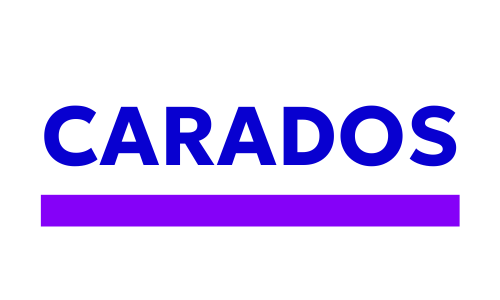The role of Smart Tech in addressing Medical Imaging workforce gaps
Introduction
There is a shortage of all staff in all medical imaging roles, and with an aging population in many of them, and expected demand increases in all, the problem is only going to get worse.
As well as increased training, international recruitment, and a significant improvement in the retention of staff in medical imaging roles, smart and connected technology will be needed to redesign the way that medical imaging is delivered.
What is Medical Imaging?
Medical imaging refers to several different technologies that are used to view the human body to diagnose, monitor, or treat medical conditions. Each type of technology gives different information about the body being studied or treated, related to disease, injury, or the effectiveness of medical treatment. (2)
Medical imaging roles include:
Radiologists examine the anatomy, pathology and clinical history of a patient and use images to diagnose, treat and manage medical conditions and diseases.
Radiographers operate scanning machines that make images for medical purposes. They use X-ray machines, CT scanners, fluoroscopy, and more. They then pass their findings onto radiologists, who interpret the images to make a diagnosis. (9)
Sonographers use imaging equipment and soundwaves to form images of the body, known as ultrasounds. They can both acquire and analyse these images to help diagnose and treat medical conditions. (1)
Mammographers are trained radiographers who undertake specialist training to work within breast imaging (7). Mammography is specialized medical imaging that uses a low-dose x-ray system to see inside the breasts. A mammography exam, called a mammogram, aids in the early detection and diagnosis of breast diseases in women. (6)
Workforce Issues
Workforce planning this important group faces significant issues.
More than 80% of health systems report shortages in radiology (3). There is a shortfall of 33% in the radiology workforce, which is expected to increase to 44% by 2024. 71% of UK clinical directors feel that they don’t have enough radiologists to deliver safe and effective patient care. Average vacancy rates for diagnostic radiographers are 11%, sonographers 6.7%, and medical physicists 9% (8).
An extra 4,000 diagnostic radiographers, 2,000 radiologists and 220 physicists, in addition to several other imaging workforce groups, are needed to keep up with demand and to enable the development of networks and community diagnostic centres (CDCs). (5)
The Royal College of Radiologists reports a 10% vacancy rate for consultant radiologists. With a predicted year-on-year increase in activity, these chronic shortages increase expenditure on agency, overtime, and outsourcing. (5)
More than half of UK cancer centre clinical directors (52%) say oncologist shortages are negatively impacting patient care. (5)
The NHS needs at least another 189 (17% of the workforce) clinical oncologists to meet demand. (5)
Without more consultants in training, investment in new models of care and better staff retention and recruitment, the UK’s radiologist shortfall is forecast to hit 44% (3,613 consultants) by 2025. (5)
Patients are potentially missing out on cutting-edge, life-saving surgery as half of trusts and health boards (47%) do not have the staff or transfer arrangements needed to run safe 24/7 interventional radiology services. (5)
More radiologists are contending with burnout, resulting in turnover above 11% in some roles. Radiologists ranked 5th out of 23 specialties in reporting high burnout rates. Diagnostic radiographers had 12% turnover in 2021 (3).
The problem is going to get worse due to the aging workforce - currently, there are nearly 21,000 radiologists involved in active patient care, and over half are over the age of 55, nearing retirement (3).
Smart and Connected Tech Responses
Addressing these issues will require digital solutions – smart and connected technology to redesign the way imaging is delivered. These include:
Networking – Imaging departments organizing themselves and delivering services through networks is shown to be one of the ways of dealing with the problems of workforce shortages and aging equipment. The benefits include better utilization of radiologist and radiographer capacity, sharing backlog reporting, increasing levels of radiographer reporting, etc. (4).
Artificial Intelligence has the potential to drive a disruptive innovation that can reduce the burden on imaging departments and improve the speed, efficiency, accuracy, and safety of services. Machine learning is a form of AI that concerns the development of computer programmes that can find patterns within complex datasets and produce intellectual predictions without explicit human programming (4).
Smart Tech – Imaging kit that helps staff scan faster and more accurately (e.g., cameras used to measure mass).
Data insights and command centres - Shared data to support efficient working, standardisation, and in-flight improvements to techniques.
References
1. College of Medicine and Science (2023). ‘Diagnostic Medical Sonographer’. Available at: https://college.mayo.edu/academics/explore-health-care-careers/careers-a-z/diagnostic-medical-sonographer/#:~:text=A%20diagnostic%20medical%20sonographer%2C%20also,and%20treat%20many%20medical%20conditions (Accessed: 15/09/2023).
2. FDA (2018). ‘Medical Imaging’. Available at: https://www.fda.gov/radiation-emitting-products/radiation-emitting-products-and-procedures/medical-imaging#:~:text=Medical%20imaging%20refers%20to%20several,monitor%2C%20or%20treat%20medical%20conditions. (Accessed: 15/09/2023).
3. Imaging Technology News (2023). ‘Minding the Gap: Strategies to Address the Growing Radiology Shortage’. Available at: https://www.itnonline.com/article/minding-gap-strategies-address-growing-radiology-shortage#:~:text=More%20than%2080%25%20of%20health,bigger%20challenges%20for%20many%20hospitals. (Accessed: 15/09/2023).
4. Kalidindi. S and Gandhi, S. (2023). ‘Workforce Crisis in Radiology in The UK and the Strategies to Deal With It: Is Artificial Intelligence the Saviour?’. Available: https://www.ncbi.nlm.nih.gov/pmc/articles/PMC10441819/ (Accessed: 15/09/2023).
5. NHS (2022). ‘Diagnostic imaging network workforce guidance’. Available at: https://www.england.nhs.uk/wp-content/uploads/2022/04/B0418_Diagnostic-imaging-network-workforce-guidance_April-2022.pdf (Accessed: 18/09/2023).
6. NHS (2023). ‘Mammographer’. Available at: https://www.healthcareers.nhs.uk/explore-roles/wider-healthcare-team/roles-wider-healthcare-team/clinical-support-staff/mammographer (Accessed: 15/09/2023).
7. RadiologyInfo (2023). ‘Mammography’. Available at: https://www.radiologyinfo.org/en/info/mammo#2cfcacbbb7b04075b8ce86ee1e0247cd (Accessed: 15/09/2023).
8. The Royal College of Radiologists. London: The Royal College of Radiologists (2023). ‘Workforce Crisis in Radiology in the UK and the Strategies to Deal With It: Is Artificial Intelligence the Saviour?’. Available at: https://www.ncbi.nlm.nih.gov/pmc/articles/PMC10441819/#REF1 (Accessed: 18/09/2923).
9. WebMD Editorial Contributors (2023). ‘What Is a Radiographer?’. Available at: https://www.webmd.com/a-to-z-guides/what-is-radiographer (Accessed: 15/09/2023).
